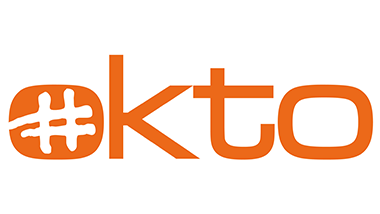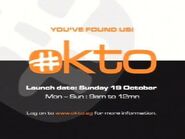
As you might have noticed, on Wednesday Mediacorp announced that it would shut down Okto and merge its contents with Channel 5. I don't know the exact reasons but I will suggest them later in the topic.
What some of you might not know is that Okto has been at the center of many twists and turns - ever since it "started broadcasting" all the way back in 1984 - from the days of the now-erstwhile Singapore Broadcasting Corporation to the present-day Mediacorp. Over these past 35 years of operation, Okto - or as it was widely known in the SBC days - Channel 12 - has had many twists and turns over its programming aesthetic, passed down from generation to generation, with changes along the way, allowing it to change its programming whenever "the board" felt like it.
PHASE 1: SBC 12 (1984 TO 1994)
In 1984, Mr. Channel 5 and Ms. Channel 8 had a child. Its name was Channel 12. Plans for a third television channel emerged in the early 80s. Television was already saturated over the two channels the SBC had owned and SBC's intention was to target a more "niche demographic". Channel 12 was set to begin its operations on February 1, 1984, as a "birthday gift" for the fourth anniversary of the Singapore Broadcasting Corporation, however due to Chinese New Year celebrations, its launch was pushed ahead for January 31 - one day before its launch, so talk about generosity.
Channel 12 was initially a fine arts channel, though within a short amount of time it managed to increase its scope of content by adding more feature films and sporting events. Upon its launch - essentially as a channel similar to what BBC Four would become nearly two decades later - it initially broadcast primarily from 8pm every evening, before expanding its daily schedule. Later on, the channel added the Japan Hour, a Japanese factual programming strand financed by the Sumitomo Corporation. Currently it airs NHK World-esque documentaries on Channel NewsAsia, and it feels like I left a spoiler.

On January 1, 1994, Channel 5 restructured to become a full-time English channel. In response, Malay programming formerly shown on Channel 5 moved to SBC 12. The SBC was restructuring its television channels. This was a sign that the SBC brand was about to die. One month later, the channel changes.
PHASE 2: CHANNEL 12 (1994 TO 1995)

On February 1, 1994, the channel rebranded to simply "Channel 12". SBC branding was being phased out as the Singapore Broadcasting Corporation was bound to become Singapore International Media. Channel 12 continued on from its predecessor's schedule of highbrow-ish programming compared to that on Channel 5 and Channel 8. In May, when Channel 8 rebranded to become a full-time Mandarin channel, it grabbed its Tamil programming.
The channel separated itself from its real parents on October 1 the same year when the restructured company was now in action. The new owner was Channel 12. Bigger plans were on the horizon. Out of all the phases, this was the one that had the shortest run.
PHASE 3: PREMIERE 12 (1995 TO 2000)
Still, Premiere 12 was some sort of alternative for those who were tight enough to get cable in the first place.
PHASE 4: CENTRAL (2000 to 2008)

In 1999, SIM was renamed MediaCorp (so as to justify its full name, Media Corporation of Singapore, later to be aborted). On January 30, 2000, Singapore Television Twelve, one of its constituent companies, got a new, simpler logo (the one seen above) and restructured its two channels yet again. Prime 12 became Suria, and it still is, as a dedicated Malay channel. Premiere 12 gave its way to a new, 3-in-1 channel called Central.

Central was divided into three channels: Kids Central, Vasantham Central and Arts Central. Out of the three, Kids Central seems to be the most remembered of the lot due to it being a dedicated kids channel, with a huge part of Central's schedule - from start-up to Vasantham - dedicated to them. It did have a better variety of programming than what Okto had as of late, possibly due to the prices of importing shows from the foreign kids channels (Cartoon Network, Disney, Nickelodeon) being significantly lower back then. Vasantham was wedged into the evening hours and catered the Tamil community. At 9pm (initially around 10pm), Arts Central took over until the channel closed down. On weekends, Vasantham Central broadcast in the afternoons in order to fit in some Tamil feature films.
PHASE 5: OKTO (2008 TO 2019)


And here we are today. The name Okto was selected for two reasons: it was going to be channel 8 on television sets and the Greek-sounding name was clearly to avoid any allusions to the Mandarin Channel 8. The structure was initially the same as Central, with oktoday being the new Kids Central (this time running until 9pm) and oktonite being the new Arts Central. They did later change the names to Ok-Tots and a-OK, respectively, and later to Okto Jr. and Okto Sports, as they realized that having an "artsy" programming block wasn't a good idea in the first place, and that Mediacorp insisted that it was going to become a channel to promote a healthier lifestyle.
Mediacorp announced that Okto will shut down in May, but maybe it's not a countenance measure. Maybe it's a sign of the schedule being terrible, as Okto Sports consisted mainly in recorded content - this isn't the heart and soul of any sports channel. Mediacorp said that most sporting events involving anything Singaporean will remain on Toggle - still a far cry behind local and international sports channels on StarHub and Singtel - and that the kids programming will move to Channel 5. This might mean that the possible new kids block on 5 will be a downsize compared to Okto, and might even be worser than the days before Kids Central.



